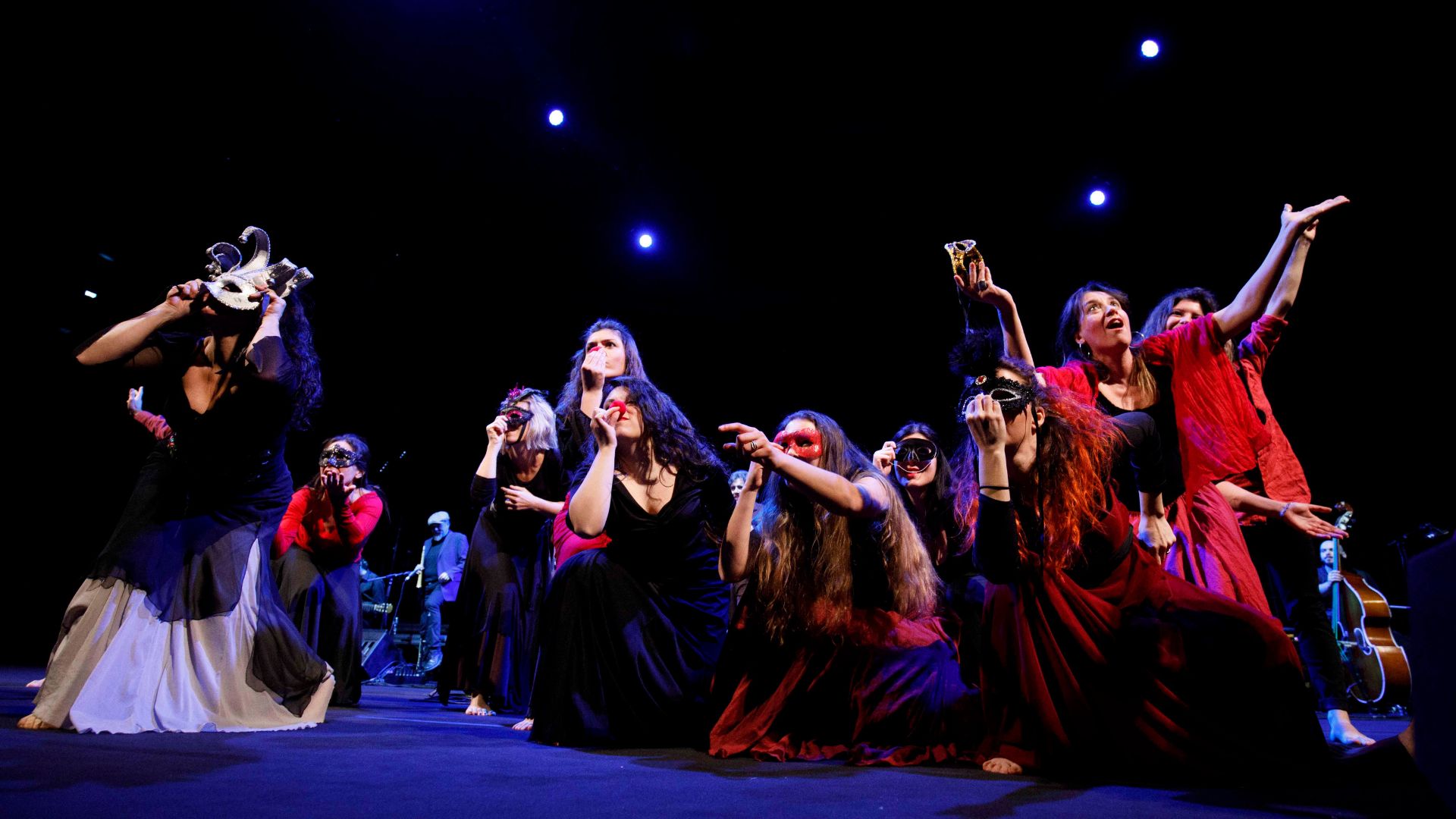
The Tarantella of Carnival
An original project by
Ambrogio Sparagna
for Italian Popular Orchestra of the Auditorium Parco della Musica
Folk Choir
directed by
Anna Rita Colaianni
Folk Dancers Group
directed by
Francesca Trenta
and with the participation of
Molisian zoomorphic masks
An original production by Fondazione Musica per Roma
The Tarantella of Carnival is back : a big party for everyone, young and old, with the participation of traditional masks and dancers who will enliven to the rhythm of overwhelming and dizzying tarantellas a big concert at 11 a.m. in Sala Sinopoli and a masked parade at 1 p.m. in the outdoor spaces of the Auditorium.
This seventh edition will feature traditional zoomorphic masks, a mode of carnival representation still widely used in many parts of our country, particularly in the Alpine and Apennine areas where economic activities related to pastoralism persist. This type of mask is characterized by the use of disguises with animal-like features: bears, goats, deer, but also villous robes. In these costumes, the specific sound signs consist of the use of rattles of various proportions, constructed from iron than from animal bones. The persistence of these archaic carnival ceremonials affirms the need, even in our contemporary culture, to preserve man's desire to make - or renew - a pact with the forces of Nature, to 'tame' them and make friends of them so that they do not hinder, indeed promote, the well-being of the community. The same can be said for masks composed of plant parts: leaves, bark, moss, straw and branches that transform the wearer into "Wild Man," a spirit of the forest who masters vegetative energies and has the power to bend them to the benefit of human beings, provided they show him due reverence and respect. In folk tradition, stage actions involving animal and plant masks contemplate their symbolic killing followed by their rebirth, representing the re-established 'pact' with the natural world and the cyclical renewal of the year and life. These kinds of rituals are still in use in some small Apennine towns in Molise. In Tufara (Cb) the ancient representation of the Devil is celebrated; in Jelsi (Cb) that of the Bear; and in Castelnuovo Volturno (Is) that of the Deer. It will be a number of masked groups from Molise along with choreographed actions performed by the group of folk dancers, coordinated by Francesca Trenta, that will characterize this seventh edition of the Tarantella of Carnival. A special occasion to rediscover the ancient agricultural rituals that highlighted the transition from Winter to Spring, a time of awakening and blossoming, auspiciousness and hope for an abundant harvest. A unique and engaging show that will offer a regenerative force, a great original, hypnotic, overwhelming and authentically popular celebration.


